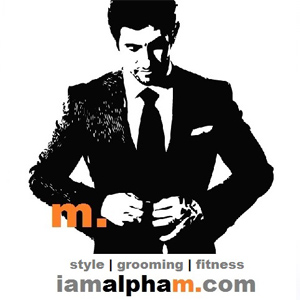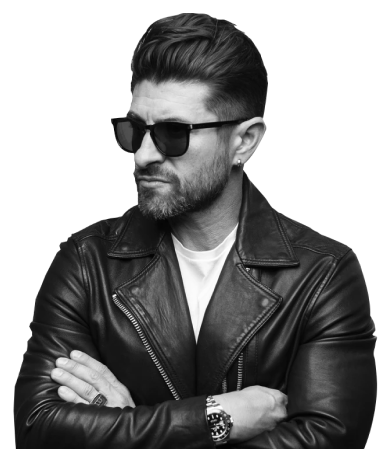 Let’s talk about sweat. Everyone does it; some more than others, and men typically do it more than women. We sweat in order to maintain our body temperature; to keep ourselves from getting dangerously overheated. As I’m sure you’ve noticed, we sweat when we’re physically active, like during exercise, and when we are nervous, like on a date or job interview. It’s understandable why we perspire when we’re active or hot, but why when we get nervous?
Let’s talk about sweat. Everyone does it; some more than others, and men typically do it more than women. We sweat in order to maintain our body temperature; to keep ourselves from getting dangerously overheated. As I’m sure you’ve noticed, we sweat when we’re physically active, like during exercise, and when we are nervous, like on a date or job interview. It’s understandable why we perspire when we’re active or hot, but why when we get nervous?
Sweating is a response caused by glandular activity, primarily the adrenal glands, when our body goes into “fight or flight” mode. A design of nature to protect and preserve us since prehistoric times, the adrenal glands release the hormones cortisol and adrenaline whenever we are faced with life threatening situations, so we can be either strong enough to fight, or fast enough to get away. Realizing our bodies will heat up, our temperature control mechanism also kicks into gear during these times causing us to sweat.
What once was perceived as life threatening, today is often just a part of life; exercising, getting angry, nervous or embarrassed, etc. – however, the body still responds as though we’re in danger. Running, for example, is something men used to do when threatened. Today, it’s usually done for fitness reasons; however, the body responds in the same way and we sweat. Being nervous about an important event may not be life threatening, but the body senses how we feel and responses accordingly by sweating. The primitive, yet, incredible human body does not know what’s going on; just that something’s going on and reacts. Years ago, it might be a bear. Today, it’s a hot date. Either way, our body responds by sweating to keep us cool.
Let’s take it a little deeper and talk about sweat glands
There are two different types of sweat glands: eccrine and epocrine. We have about three million sweat glands throughout our body; with eccrine glands being the more numerous of the two. Eccrine glands are everywhere on the body, and epocrine are only located in the armpit and groin areas. Eccrine glands do not secrete sweat that smells offensive and epocrine glands do. Actually, sweat does not have an odor, no matter where it’s secreted. It’s the bacteria on the skin that causes perspiration to smell when the two come together. Folds of skin under the arm and in the groin have lots of bacteria on it, so when the thick, yellow sweat produced by the epocrine glands meet up with the bacteria, whamo… you stink! Sweat produced by the eccrine glands on the forehead, face, chest, etc., evaporates quickly, and although it, too, meets up with bacteria, it doesn’t have time to interact and get funky, since it vanishes quickly. This is why we only use deodorant under our arms and not on our entire body.
It’s believed we have epocrine glands because the odor or scent that’s produced in underarm and groin areas was used to attracted mates, establish territorial boundaries, or used as an alarm system… possibly to let others know of danger. Nature’s design is amazing; however, I think we would all agree we could do without the offensive odor and yellow armpit stains on our shirts. And I don’t know about cavewomen, but a sweaty smelling groin is the last way to attract a mate now a days!
I’m often asked for advice on how to control and deal with perspiration, which we all know can interfere with life. The remainder of this article will address steps to reducing sweat, how to remove perspiration stains from our clothing, and which clothes are best to wear for the heavy sweater.
Tips on controlling perspiration
- Use an underarm product that’s both an antiperspirant and deodorant. If you can’t find one, use both. Antiperspirants reduce or prevent sweating, while deodorants mask odor. These products can be found in aerosols, roll-ons and sticks, and are usually designed for underarm use; however, there are products for other areas of the body like the groin.
- Talcum powder and cornstarch absorb moisture, so sprinkle on problem areas. There are medicated powders designed for this type use.
- Drink plenty of fluids, preferably water, to help control your body temperature and reduce sweating. Fluids help to keep us from overheating; much like a car’s radiator prevents a car from overheating. Avoid drinking hot beverages during hot, humid weather because they will make you perspire more.
- Wear a hat when out in the sun. Keeping your head cool will help keep your body temperature from getting so hot you perspire.
- Dress yourself with appropriate clothing, which will reduce sweating. We’ll discuss this later in the article.
- Lose weight and stay fit. Typically, excess weight causes us to sweat more because we are carrying additional weight that stress the body and makes it work harder.
- Find ways to reduce stress. Deep breathing, yoga, tai chi and meditation are proven ways to relax… which will turn off the water works!
- Foot odor is another problem caused by sweat and bacteria mingling together. The best way to avoid sweaty feet is to wear breathable cotton socks verses socks made of synthetic material, and to always wear socks with shoes. Foot deodorizers, talcum powder, corn starch, baking soda, charcoal odor-eaters, are a few options that prove helpful in eliminating foot moisture and odor. Rotating shoes, which allows shoes to breathe in between being worn is recommended.
Perspiration, especially when combined with an antiperspirant, leaves unattractive yellow stains on clothing. Perspiration stains are usually difficult to remove, especially when they’re old, or when stained clothing has been dried in a dryer, which makes the stains permanent and darker. Instead of avoiding white clothing or throwing stained clothing away, try banishing stains with some of these common household items and home remedies.
Stain removing home remedies
- First, determine if the stain is truly from perspiration, or from the antiperspirant or deodorant you wear. A stain from an antiperspirant will be clear to white in color and feel greasy. Laundry degreaser works well to remove this type stain. If the stain is yellow or green in color and feels a little crunchy, it’s from perspiration. Sounds crazy, but move the stained area around in between your fingers and if it feels like the material’s breaking up or cracking, it’s a perspiration stain. Speaking of antiperspirants – making sure it’s dry before putting your shirt on will reduce staining.
- The easiest and fastest way to treat underarm stains is to soak clothes in cold water before laundering. If this isn’t sufficient, add ¼ cup white vinegar to your washing machine during the wash cycle, or when you add laundry detergent. Make sure to use cold water! Hanging your shirt/clothes outside to dry in the sun can be effective, since the sun can bleach stains out naturally.
- Pour a small amount of white vinegar onto the stain, making sure to thoroughly saturate the material. Then apply a small amount of laundry detergent to the stain and gently rub it in. Allow the detergent to sit on the stain for at least 10 minutes before washing. Wash in the hottest water allowed for that specific article of clothing, then air dry. Drying in a drier will only “set” the stain, making it near impossible to remove.
- To remove stains from white clothing, combine equal parts water and ammonia into a bowl. Use a rag or sponge to dab the solution onto the perspiration stains. Let the solution sit on the clothing for 10 to 15 minutes. Wash the white clothing as usual. Let the clothing air dry; then inspect it for any traces of the perspiration stains.
- If the above method does not successfully remove the stain, soak the clothes in equal parts water and hydrogen peroxide for 30 minutes. Allow clothing to air dry, and should stain persist, soak it again in two parts hydrogen peroxide and one part water for 30 minutes, wash and air dry.
- Another method of treating stains on white clothing is to mix ¼ cup warm water and 4 tablespoons of baking soda to form a loose paste. Apply the paste to the stain, letting it sit for two hours; then launder as usual. Always air dry in case the stain is not out.
- Mix four parts laundry detergent with one part water in a bowl and stir with a spoon. When thoroughly mixed, pour it into a spray bottle. Turn your shirt inside out and spray the detergent mixture onto the inside of the underarm area of your shirt. Let it sit on your shirt for an hour. Then gently scrub the stained area with a soft bristled laundry brush or toothbrush. Fill a bucket or sink with cold water and 3 tablespoons of laundry detergent. Place your shirt in the bucket, and leave it soak overnight. Remove the shirt the next morning and launder it in the washing machine as usual. Do not dry in a dryer. Check the garment to see if it’s white again. If not, repeat the process, but this time replace Step 1 with a mixture of one part hydrogen peroxide with one part water.
- If the clothing still has a stain on it… toss it! There’s only so much a man can deal with! Or, research online for more stain removing remedies.
Learning how to dress if you’re a heavy sweater is key in keeping yourself comfortable, and your wardrobe as stain free as possible
Basically, you want to wear clothing that breathes. Typically, these are clothes made of natural materials like cotton and wool that allow airflow to circulate from your skin to the outside of the clothing and vice versa. Breathable fabrics will keep you cooler and allow perspiration to evaporate. Although silk is a natural fabric, heavy sweaters should avoid wearing it because it doesn’t hold up well to moisture and stains easily. Two other fabrics to avoid, although they’re made of cotton, are flannel and corduroy. These fabrics are very warm, and will most likely cause you to perspire too much. There are many cotton and wool blends on the market today that will keep you cool and stylish. Linen, prima cotton, and cashmere are a few more great choices.
Synthetic materials: nylon, polyester, polyblends, including cotton/polyblends, etc., should also be avoided because of their inability to breathe, and the likelihood of them causing you to sweat even more than usual. The only exception to this is some athletic clothing, which is made of wicking fabrics that are water resistant and wick sweat away from the body.
Certain colors and patterns can disguise sweat stains, or make them less noticeable. Choose pure white, black, navy, and dark colors; avoiding any light colors because perspiration changes their color, making the wet area more noticeable. Patterned clothing masks sweat and stains because of the pattern’s various shades and textures, which make moisture less obvious.
Dealing with heavy perspiration can be very challenging, but it can be managed and minimized if the proper steps are taken. You’re not alone with this problem, and as a result, there are numerous products and strategies available to address this situation. If you think you perspire too much and can’t get it under control, speak with your doctor to rule out any underlying problem. Take a breath, relax and don’t sweat the small stuff. Perspiration does not have to get in the way of living your best image!
by Aaron Marino












